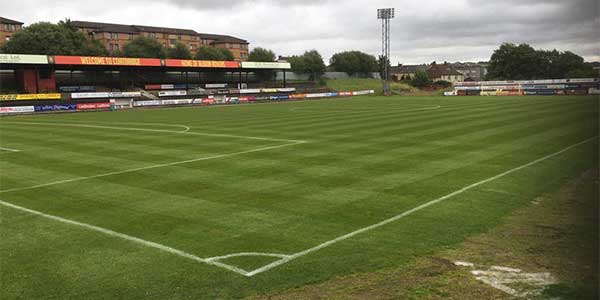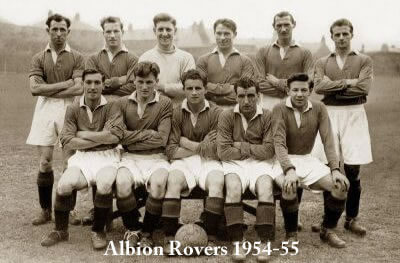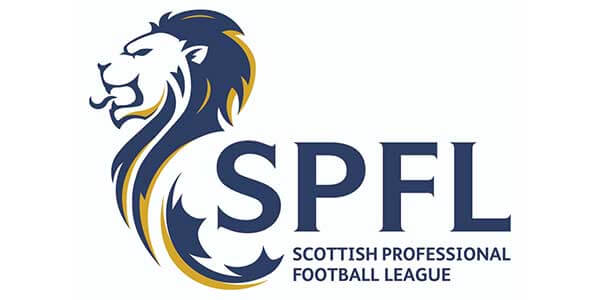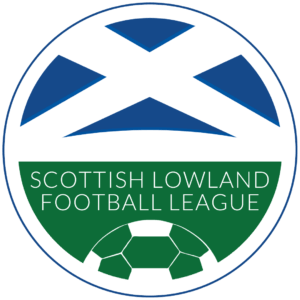Albion Rovers Football Club is a Scottish football team from the North Lanarkshire town of Coatbridge, currently playing in the Scottish Professional Football League in the cinch League 2. Founded in 1882 as the result of an amalgamation of two other teams, the club joined the Scottish Football League initially in 1903 before returning in 1919 and, although they have spent most of their time in the lower divisions, have maintained their league membership since. Their sole major honours during that time have been wins in the old and new Second Divisions (second and third tiers respectively).
The club’s home stadium is Cliftonhill, opened on Christmas Day 1919.

Cliftonhill
Albion Rovers were formed in 1882 from a merger of the two Coatbridge sides Albion FC and Rovers FC.
The club joined the Scottish Football League Second Division in 1903 along with Ayr Parkhouse F.C. following a small expansion in numbers. Rovers (as their fans prefer the team to be called, rather than “Albion”) settled into the League reasonably well, albeit without ever clinching promotion. By 1915 the Scottish Football League had been merged into a single division structure, with the second division scrapped. The Rovers moved to join the Western Football League and whilst members of this set-up moved to their current Cliftonhill home in 1919. They were close to returning to the Scottish League in 1917 but lost out in a vote amongst Clydebank, Vale of Leven and Stevenston United F.C.
Cliftonhill
Albion Rovers were formed in 1882 from a merger of the two Coatbridge sides Albion FC and Rovers FC.
The club joined the Scottish Football League Second Division in 1903 along with Ayr Parkhouse F.C. following a small expansion in numbers. Rovers (as their fans prefer the team to be called, rather than “Albion”) settled into the League reasonably well, albeit without ever clinching promotion. By 1915 the Scottish Football League had been merged into a single division structure, with the second division scrapped. The Rovers moved to join the Western Football League and whilst members of this set-up moved to their current Cliftonhill home in 1919. They were close to returning to the Scottish League in 1917 but lost out in a vote amongst Clydebank, Vale of Leven and Stevenston United F.C.

With their new stadium completed, Rovers returned to the single division Scottish League for the 1919-20 season. Although they finished rock bottom that season the club also enjoyed possibly their finest hour when they reached the final of the Scottish Cup, being defeated 3-2 by Kilmarnock. Rovers remained a top-flight side even after the return of the Second Division until their relegation in 1923. It was during this period that John “Jock” White, became Rovers’ only international appearing for Scotland, in a match against Wales. The club were mired in the Second Division until the 1933-34 season when they took the Second Division title by a point from Dunfermline Athletic. Of the five seasons immediately before the Second World War Rovers spent all but one of them as a top-flight side. They took part in the emergency Western League during the 1939-40 season before transferring over to the Southern Football League. Despite struggling from time to time to get a full side out the Rovers managed to survive the war in good shape.
With their new stadium completed, Rovers returned to the single division Scottish League for the 1919-20 season. Although they finished rock bottom that season the club also enjoyed possibly their finest hour when they reached the final of the Scottish Cup, being defeated 3-2 by Kilmarnock. Rovers remained a top-flight side even after the return of the Second Division until their relegation in 1923. It was during this period that John “Jock” White, became Rovers’ only international appearing for Scotland, in a match against Wales. The club were mired in the Second Division until the 1933-34 season when they took the Second Division title by a point from Dunfermline Athletic. Of the five seasons immediately before the Second World War Rovers spent all but one of them as a top-flight side. They took part in the emergency Western League during the 1939-40 season before transferring over to the Southern Football League. Despite struggling from time to time to get a full side out the Rovers managed to survive the war in good shape.

It would be 1946-47 before the League returned full-time and Rovers, whose 16th place finish in 1939 would not normally have led to relegation, were assigned to the ‘B’ Division due to a restructuring of the League set-up. To add to their problems the celebrated wing partnership of Willie Findlay and Johnny McIlhatton was broken up when the former departed for Rangers late in the season. Despite this Rovers, whose team included Jock Stein, did manage to clinch promotion in 1948 if only for one season, amassing only 8 points and an immediate return to the ‘B’ Division.
This was to mark the effective end of the Rovers as any sort of force in Scottish football as they became stuck in the Second Division from then on, rarely threatening the teams at the top. In a rare break from the gloom for supporters for a spell during the 1970s the Rovers team frequently included the “spicy” trio of Bill Currie, Sid Sage and Albert Rice which raised a few smiles at the time. The changes brought in for the 1975-76 season saw Rovers placed in the new Second Division, which was now the third tier of the Scottish League and once again the club settled into a constant role amongst the division’s also rans, even finishing last in 1983-84 season. They did however manage to make some headlines for reasons other than their on-field performances when in 1983 confectioners Tunnock’s became the club’s shirt sponsor and the appearance of the shirt was altered to mimic the gold wrapper with red diagonal stripes of a caramel wafer bar the company produced, making Rovers one of the very few clubs to wear a kit inspired by a sweet wrapper. In 1986 a book covering the club’s history was published, “The Boys From the ‘Brig’” by Robin Marwick,
Although the form of players such as Vic Kasule and Bernie Slaven brought some respite from the poor form it was not until the 1988-89 season that the fans had anything to celebrate when the club were crowned Second Division champions. The First Division stay was to last only one season again however and by Rovers form was such that 1991-92 season the club was bottom of the lowest League for two years in a row.
It would be 1946-47 before the League returned full-time and Rovers, whose 16th place finish in 1939 would not normally have led to relegation, were assigned to the ‘B’ Division due to a restructuring of the League set-up. To add to their problems the celebrated wing partnership of Willie Findlay and Johnny McIlhatton was broken up when the former departed for Rangers late in the season. Despite this Rovers, whose team included Jock Stein, did manage to clinch promotion in 1948 if only for one season, amassing only 8 points and an immediate return to the ‘B’ Division.
This was to mark the effective end of the Rovers as any sort of force in Scottish football as they became stuck in the Second Division from then on, rarely threatening the teams at the top. In a rare break from the gloom for supporters for a spell during the 1970s the Rovers team frequently included the “spicy” trio of Bill Currie, Sid Sage and Albert Rice which raised a few smiles at the time. The changes brought in for the 1975-76 season saw Rovers placed in the new Second Division, which was now the third tier of the Scottish League and once again the club settled into a constant role amongst the division’s also rans, even finishing last in 1983-84 season. They did however manage to make some headlines for reasons other than their on-field performances when in 1983 confectioners Tunnock’s became the club’s shirt sponsor and the appearance of the shirt was altered to mimic the gold wrapper with red diagonal stripes of a caramel wafer bar the company produced, making Rovers one of the very few clubs to wear a kit inspired by a sweet wrapper. In 1986 a book covering the club’s history was published, “The Boys From the ‘Brig’” by Robin Marwick,
Although the form of players such as Vic Kasule and Bernie Slaven brought some respite from the poor form it was not until the 1988-89 season that the fans had anything to celebrate when the club were crowned Second Division champions. The First Division stay was to last only one season again however and by Rovers form was such that 1991-92 season the club was bottom of the lowest League for two years in a row.

The struggling team were assigned to the newly created Scottish Football League Third Division for the 1994-95 season and maintained their mediocrity once again collecting the wooden spoon. Rovers were one of the weakest sides in this new League but after another last place finish in 1999-2000 there was an attempt to change the club’s fortunes. Struggled financially not least due to the proximity of the Old Firm clubs, the team surprisingly went full-time, although many of the full-time players were unemployed youths that the club gave work to under a government scheme. On the pitch this nearly paid the hoped for dividends as Rovers began to challenge for promotion but the experiment proved too expensive and success eluded Rovers. In an attempt to cut costs the club’s board did consider an unpopular groundshare with Airdrieonians and the number of full-timers was substantially reduced. This all came to naught and the board was ousted. Despite various commercial offers to purchase Cliftonhill, the new board has insisted that it will first seek a new home in Coatbridge before closing any deal. Against this background in early 2005 a group of fans set up Albion Rovers Supporters’ Trust with a view to benefit the club and local community.
The struggling team were assigned to the newly created Scottish Football League Third Division for the 1994-95 season and maintained their mediocrity once again collecting the wooden spoon. Rovers were one of the weakest sides in this new League but after another last place finish in 1999-2000 there was an attempt to change the club’s fortunes. Struggled financially not least due to the proximity of the Old Firm clubs, the team surprisingly went full-time, although many of the full-time players were unemployed youths that the club gave work to under a government scheme. On the pitch this nearly paid the hoped for dividends as Rovers began to challenge for promotion but the experiment proved too expensive and success eluded Rovers. In an attempt to cut costs the club’s board did consider an unpopular groundshare with Airdrieonians and the number of full-timers was substantially reduced. This all came to naught and the board was ousted. Despite various commercial offers to purchase Cliftonhill, the new board has insisted that it will first seek a new home in Coatbridge before closing any deal. Against this background in early 2005 a group of fans set up Albion Rovers Supporters’ Trust with a view to benefit the club and local community.

The 2006–07 season saw the club celebrate its 125th anniversary and various events took place and souvenirs were produced. A new kit that combined the original blue colours with the yellow adopted during the 1960s was also introduced as part of the celebrations. On the field 2006–07 saw the club progress to the semi-finals of the Challenge Cup, their first semi-final since 1921, a match they lost 4–1 to Ross County in Dingwall.
The 2006–07 season saw the club celebrate its 125th anniversary and various events took place and souvenirs were produced. A new kit that combined the original blue colours with the yellow adopted during the 1960s was also introduced as part of the celebrations. On the field 2006–07 saw the club progress to the semi-finals of the Challenge Cup, their first semi-final since 1921, a match they lost 4–1 to Ross County in Dingwall.

Rovers have remained members of the Third Division since, although in the 2009-10 season they missed out on the promotion/relegation play-offs by a single point. The 2010-11 season has seen the club consistently in the top few places with the hope of a successful promotion challenge. The team narrowly missing the chance to top the division in mid December but successfully gained a place in the play offs for the first time and going on to beat Queen’s Park in the semi-final and Annan in the play-off final to gain promotion to division 2.
Rovers have remained members of the Third Division since, although in the 2009-10 season they missed out on the promotion/relegation play-offs by a single point. The 2010-11 season has seen the club consistently in the top few places with the hope of a successful promotion challenge. The team narrowly missing the chance to top the division in mid December but successfully gained a place in the play offs for the first time and going on to beat Queen’s Park in the semi-final and Annan in the play-off final to gain promotion to division 2.

Rovers were crowned Scottish Second Division Champions after coming back from two goals down to win 3-2 against Clyde fc on 18th April. Champions Albion Rovers fought back to claim a draw with Arbroath before being presented with the Scottish League Two trophy a week later. The final League table Rovers were ten points clear of their nearest rivals Queens Park with 71 points from 36 games.
Rovers were crowned Scottish Second Division Champions after coming back from two goals down to win 3-2 against Clyde fc on 18th April. Champions Albion Rovers fought back to claim a draw with Arbroath before being presented with the Scottish League Two trophy a week later. The final League table Rovers were ten points clear of their nearest rivals Queens Park with 71 points from 36 games.

Rovers started off their 2015 Ladbrokes League One campaign with an emphatic 3-0 victory against Ayr United at home. The spell was a high point for the club.
Rovers started off their 2015 Ladbrokes League One campaign with an emphatic 3-0 victory against Ayr United at home. The spell was a high point for the club.

Rovers were relegated to league two in May 2018. After a dismal start to the season, Kevin Harper led the squad to ‘The Greatest Escape’ retaining our SPFL status. Picking up 16-points in our final eight games we finished ninth after being down and out just weeks before after drawing with Berwick Rangers at home. It was a sombre celebration as we lost our goalkeeping coach Michael Duke who passed away suddenly.
The 2019-20 season was cut short due to the Coronavirus outbreak as the campaign was curtailed leaving us in 9th place. Kevin Harper left the club.
The 2020-21 season started with the appointment of Brian Reid.
Rovers were relegated to league two in May 2018. After a dismal start to the season, Kevin Harper led the squad to ‘The Greatest Escape’ retaining our SPFL status. Picking up 16-points in our final eight games we finished ninth after being down and out just weeks before after drawing with Berwick Rangers at home. It was a sombre celebration as we lost our goalkeeping coach Michael Duke who passed away suddenly.
The 2019-20 season was cut short due to the Coronavirus outbreak as the campaign was curtailed leaving us in 9th place. Kevin Harper left the club.
The 2020-21 season started with the appointment of Brian Reid.

Rovers were relegated to the Scottish Lowland Football League after a play-off defeat to Spartans over two legs in the summer of 2023.
Rovers were relegated to the Scottish Lowland Football League after a play-off defeat to Spartans over two legs in the summer of 2023.







